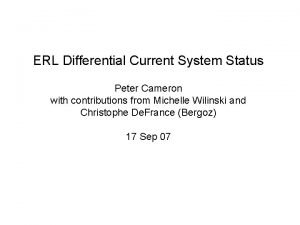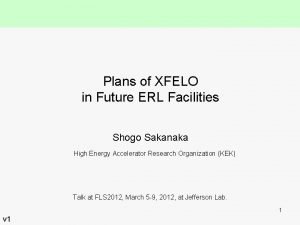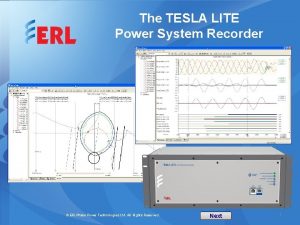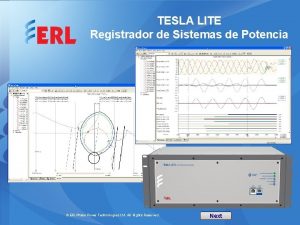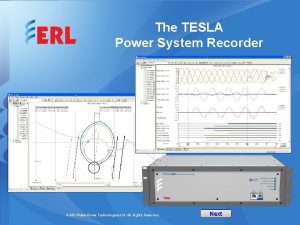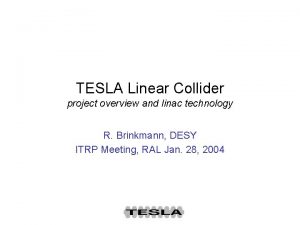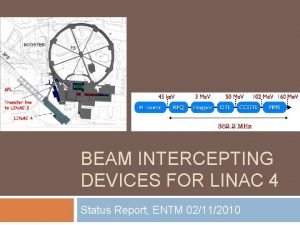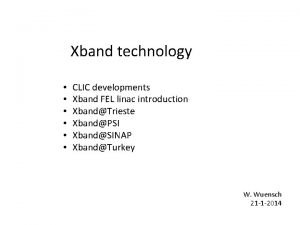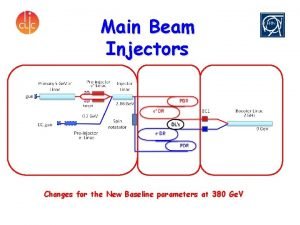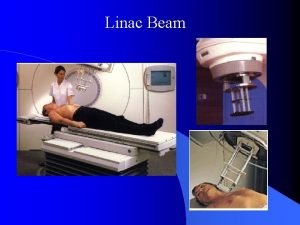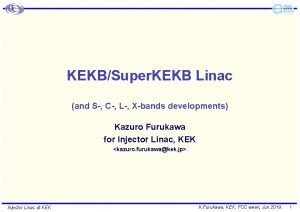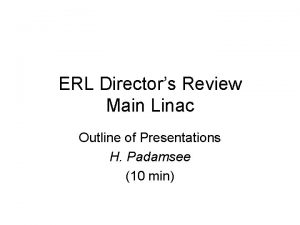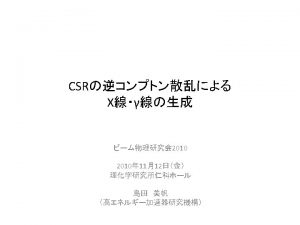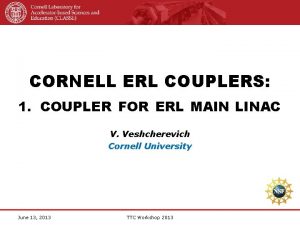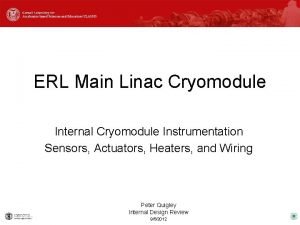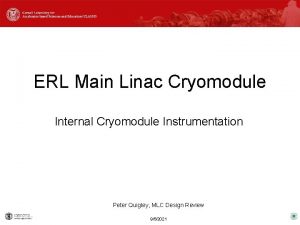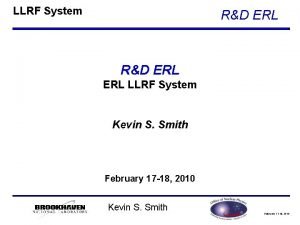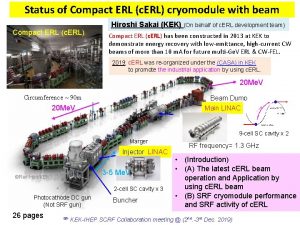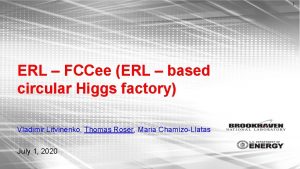ERL Directors Review Main Linac Outline of Presentations











- Slides: 11

ERL Director’s Review Main Linac Outline of Presentations H. Padamsee (10 min)

Distinguishing Features for ERL Main Linac • CW operation • Low beam loading due to energy recovery • High reliability operation desired as a light source

Some High Level Consequences • CW operation: dynamic heat load is dominant – Refrigeration is a major part of the facility • Influences optimal gradient choice, • Design for highest reasonable Q 0 – T = 1. 8 K is a serious possibility • Reliability – Choose modest gradient (16 MV/m) for higher reliability if cost optimum vs gradient is broad – Radiation dose from cavity is CW • Favors modest gradient (field emission grows exponentially) – RF architecture : One RF source/cavity • Loss of one RF source means loss of one cavity • Optimize for the best performance of each cavity, as needed • Low beam power – Low peak and low CW RF power – High Qext, low microphonics and excellent LLRF control desired

Outline of ERL Main Linac Presentations

Part I: Overall Parameters, Cavity and HOM Issues (Matthias Liepe, 30 min) • Optimization of capital, operating and total costs – Parameter Choices • Gradient, Q 0… • Cavity and HOM issues (coupled) – cell shape, number of cells, multipactor… – QHOM, HOM power, HOM frequency range • String layout, filling factor

Overall Parameters • Energy 5 Ge. V • Beam current 2 x 100 m. A – Bunch charge 77 p. C, Bunch length 2 ps (0. 6 mm) • • Main Linac Tunnel length: 319 m 2 linacs, 4 sections, 639 m total, 64 modules, 384 cavities Cryo-module: 6 SRF cavities + 1 magnet package (9. 8 m total) 7 cells per cavity Average gradient = 16. 2 MV/m Q 0 = 2 x 1010, Top = 1. 8 K Total Refrigeration including 50% margin: – 6. 3 k. W @ 1. 8 K, 8. 1 k. W @ 5 K, 98 k. W @ 80 K • Qext = 6. 5 x 107 • HOM power (average) 150 watt/cavity • Peak & average RF power/cavity = 5 k. W & 2 k. W

Part II: Cryomodule Design Aspects (Eric Chojnacki, 20 min) • Number of cavities per module • Use basic TTF module design concepts – Variations – improve alignment and allow re-positioning in linac (with CM under vacuum and cold)

Part III: RF Choices Sergey Belomestnykh, 20 min • IOT vs Klystrons • RF architecture, one IOT/cavity – Optimize each cavity for its gradient potential – Higher reliability • lose only one cavity per IOT lost, instead of many cavities – Save space on RF distribution system • Coupler choices

Part IV: LLRF (Matthias Liepe, 20 min) • Low beam loading • Amplitude and phase stability requirements from beam quality • Qext, microphonics tolerance, tuner, LLRF

Each Talk Will Cover • • Baseline design choices Options still to be explored R&D program to address open issues Prototyping plan after fixing design choices

Final Talk : New Ideas (Mathias Liepe, 20 min ) • To reduce capital and operating costs • Push for highest Q 0 • Highest Qext, – Low RF power • Alternate cavity/HOM designs • Simplify – HOM coupler – Input coupler – Cryomodule
